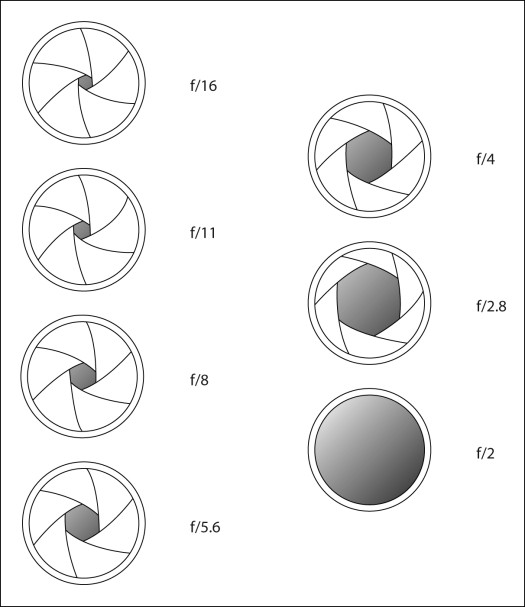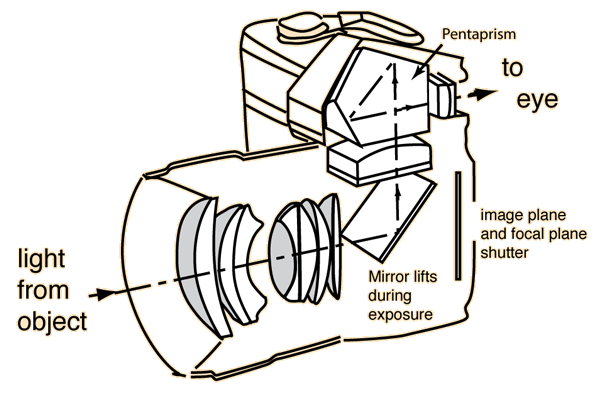Saturday, January 31, 2015
Wednesday, January 28, 2015
Viewfinder mateo
http://www.luminous-landscape.com/tutorials/understanding-series/viewfinders.shtml
Viewfinder image: this is your view of the world through the camera, the little rectangle with black edges that shows you what part of the world the lens is looking at and whether it's in focus or not.
Magnification: this refers to how big the viewfinder image appears to be in an absolute sense. Like a batting average, it's usually expressed as some decimal fraction of one. 1X is the size that things appear to be when you look at them with your eye (a.k.a. "the naked eye"). Now, obviously, magnification also changes when you use different lens focal lengths — telephotos make things look bigger, wide-angles make things look smaller. So camera magnification is specified with a 50mm lens. Less often stated is that the lens must be set at infinity, because magnification also changes slightly depending on how close or far you focus the lens.
Coverage: this compares what you can see in the viewfinder with what will be recorded on the film. It's reported as a percentage. If you can see through the viewfinder half of what will be on the negative, that would be 50% coverage.
Viewfinder image: this is your view of the world through the camera, the little rectangle with black edges that shows you what part of the world the lens is looking at and whether it's in focus or not.
Magnification: this refers to how big the viewfinder image appears to be in an absolute sense. Like a batting average, it's usually expressed as some decimal fraction of one. 1X is the size that things appear to be when you look at them with your eye (a.k.a. "the naked eye"). Now, obviously, magnification also changes when you use different lens focal lengths — telephotos make things look bigger, wide-angles make things look smaller. So camera magnification is specified with a 50mm lens. Less often stated is that the lens must be set at infinity, because magnification also changes slightly depending on how close or far you focus the lens.
Coverage: this compares what you can see in the viewfinder with what will be recorded on the film. It's reported as a percentage. If you can see through the viewfinder half of what will be on the negative, that would be 50% coverage.
Emilia - Diaphragm
DIAPHRAGM- EMILIA CIANCI
In optics, a diaphragm is a thin opaque structure with an opening (aperture) at its center. The role of the diaphragm is to stop the passage of light, except for the light passing through the aperture. Thus it is also called a stop (an aperture stop, if it limits the brightness of light reaching the focal plane, or a field stop or flare stop for other uses of diaphragms in lenses). The diaphragm is placed in the light path of a lens or objective, and the size of the aperture regulates the amount of light that passes through the lens. The centre of the diaphragm's aperture coincides with the optical axis of the lens system.
Most modern cameras use a type of adjustable diaphragm known as an iris diaphragm, and often referred to simply as an iris.

In optics, a diaphragm is a thin opaque structure with an opening (aperture) at its center. The role of the diaphragm is to stop the passage of light, except for the light passing through the aperture. Thus it is also called a stop (an aperture stop, if it limits the brightness of light reaching the focal plane, or a field stop or flare stop for other uses of diaphragms in lenses). The diaphragm is placed in the light path of a lens or objective, and the size of the aperture regulates the amount of light that passes through the lens. The centre of the diaphragm's aperture coincides with the optical axis of the lens system.
Most modern cameras use a type of adjustable diaphragm known as an iris diaphragm, and often referred to simply as an iris.

Normal Lens- Liz
Normal Lens
A normal lens is one that produces a field of view that looks natural or "normal" to the human eye, rather than a distorted field of view that would be produced by a different lens (wide angle, etc).
A normal lens is one that produces a field of view that looks natural or "normal" to the human eye, rather than a distorted field of view that would be produced by a different lens (wide angle, etc).
Shutter Speed-Zoe
Shutter speed, also known as the exposure time, is the length of time that the camera's shutter is open when taking a photo. Shutter speed is also the length of time that the light reaches the film. Differences in the shutter speed can be made to result in changes in brightness of the photograph.
Reflex Camera (Jalen Ransome)
The single-lens reflex 35 mm camera is the choice of many serious amateur as well as professional photographers because the light from the object reflects from a mirror and is taken through the eyepiece to the eye of the photographer, in contrast to a viewfinder camera where the photographer is looking through a separate lens at the subject. The advantage of the SLR is that the eye sees approximately what the film will record, so that you can freely interchange lenses, use close-up lenses, etc. and still see what you will record on the film

source: http://hyperphysics.phy-astr.gsu.edu/hbase/geoopt/slr.html
The single-lens reflex 35 mm camera is the choice of many serious amateur as well as professional photographers because the light from the object reflects from a mirror and is taken through the eyepiece to the eye of the photographer, in contrast to a viewfinder camera where the photographer is looking through a separate lens at the subject. The advantage of the SLR is that the eye sees approximately what the film will record, so that you can freely interchange lenses, use close-up lenses, etc. and still see what you will record on the film

source: http://hyperphysics.phy-astr.gsu.edu/hbase/geoopt/slr.html
Tuesday, January 27, 2015
Rangefinder Camera - Claire Raddatz
With rangefinder cameras, you never look through the lens. Instead, you look through a "range finder," which is usually located at the top right of the camera. They focus by using a dual-image device. You have the turn the ring of the camera to match us the two images to bring the image into focus. These cameras were popular around the 1950s.
Source: http://www.kenrockwell.com/tech/rangefinder-vs-slr.htm
Source: http://www.kenrockwell.com/tech/rangefinder-vs-slr.htm
Wide Angle Lenses (Octavia)
Wide Angle Lens
Wide Angle Lens gives the photographer or cinematographer the opportunity to play with distance, and perception, capturing more of one's subject or environment. Below you'll find a link to a extensive description of the function of a wide angle lens:
http://www.cambridgeincolour.com/tutorials/wide-angle-lenses.htm
Work Cited:"USING WIDE ANGLE LENSES." Using Wide Angle Lenses. Cambridge in Color. Web. 26 Jan. 2015.
- Octavia Ewart
Wide Angle Lens gives the photographer or cinematographer the opportunity to play with distance, and perception, capturing more of one's subject or environment. Below you'll find a link to a extensive description of the function of a wide angle lens:
http://www.cambridgeincolour.com/tutorials/wide-angle-lenses.htm
Work Cited:"USING WIDE ANGLE LENSES." Using Wide Angle Lenses. Cambridge in Color. Web. 26 Jan. 2015.
- Octavia Ewart
Zoom Lenses- Caterina Franciosi
There are two different types of lenses according to the difference in the focal length, which sets the angle of view of the camera. Prime lenses have a fixed focal length, whereas zoom lenses have variable focal lengths. Therefore, they are more properly called varifocal lenses. Thanks to this feature, zoom lenses allows to photograph a variety of subjects such as landscapes and portraits without the need to change lenses for different situations. This advantage allows to save time and reduces the risk of damaging the camera's box or sensor with dust coming inside.
Sources: http://www.nikonusa.com/en/Learn-And-Explore/Article/g3cu6o2o/understanding-focal-length.html#!
Caterina Franciosi
Sources: http://www.nikonusa.com/en/Learn-And-Explore/Article/g3cu6o2o/understanding-focal-length.html#!
Caterina Franciosi
ISO - Jenny Dobias
ISO is the sensitivity that the sensor in a camera has to light. This setting can be manually adjusted; a low ISO setting means the camera is less sensitive to light and a high ISO setting means the camera is more sensitive to light.
https://photographylife.com/what-is-iso-in-photography
Telephoto Lens - Abeer
http://www.ephotozine.com/article/8-top-ways-to-use-a-telephoto-lens-for-photography-17652
Lens--Lilia
Lens
The lens is one of the most vital parts of a camera. The light enters through the lens, and this is where the photo process begins. Lenses can be either fixed permanently to the body or interchangeable. They can also vary in focal length, aperture, and other details.
Wednesday, January 21, 2015
Abeer
Sally Mann Photographer
Childhood memories. The two sisters are wearing white, a symbol of innocence and purity; the whiteness is contrasted with the darkness of the image.
Zoe
This photograph is of part of the Niagara River at sunset, focused towards Canada. I took this photograph with my iPhone camera.
Claire

The beautiful Piazza Navona on a sunny day in Rome
Photo by Claire Raddatz | iPhone photo | January 16, 2015
Marisa
simple pleasure of the day / il piacere del giorno n. 16 www.marisademarco.com
Photo taken by Marisa DeMarco in Trastevere (Rome) on January 20, 2015.
Subscribe to:
Posts (Atom)











